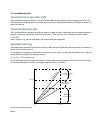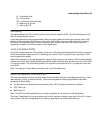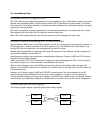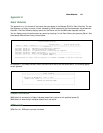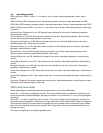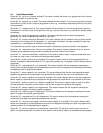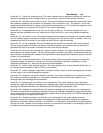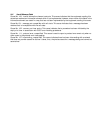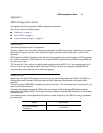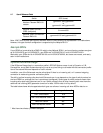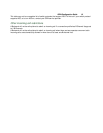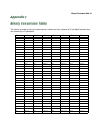H-4 User’s Reference Guide
Cause No. 34: no circuit/channel available. This cause indicates that there is no appropriate circuit/channel
presently available to handle the call.
Cause No. 38: network out of order. This cause indicates that the network is not functioning correctly and that
the condition is likely to last a relatively long period of time: e.g., immediately reattempting the call is not likely
to be successful.
Cause No. 41: temporary failure. This cause indicates that the network is not functioning correctly and that
the condition is not likely to last a long period of time: e.g., the user may wish to try another call attempt almost
immediately.
Cause No. 42: switching equipment congestion. This cause indicates that the switching equipment
generating this cause is experiencing a period of high traffic.
Cause No. 43: access information discarded. This cause indicates that the network could not deliver access
information to the remote user as requested: i.e., user-to-user information, low layer compatibility, high layer
compatibility, or a sub-address as indicated in the diagnostic.
It is noted that the particular type of access information discarded is optionally included in the diagnostic.
Cause No. 44: requested circuit/channel not available. This cause is returned when the circuit or channel
indicated by the requesting entity cannot be provided by the other side of the interface.
Cause No. 47: resource unavailable, unspecified. This cause is used to report a resource unavailable event
only when no other cause in the resource unavailable class applies.
Cause No 49: Quality of Service not available. This cause is used to report that the requested Quality of
Service, as defined in Recommendation X.213, cannot be provided (e.g., throughput or transit delay cannot be
supported).
Cause No. 50: requested facility not subscribed. This cause indicates that the requested supplementary
service could not be provided by the network because the user has not completed the necessary administrative
arrangements with its supporting networks.
Cause No 57: bearer capability not authorized. This cause indicates that the user has requested a bearer
capability implemented by the equipment that generated this cause that the user is not authorized to use.
Cause No. 58: bearer capability not presently available. This cause indicates that the user has requested a
bearer capability implemented by the equipment that generated this cause which is not available at this time.
Cause No 63: service or option not available, unspecified. This cause is used to report a service or option
not available event only when no other cause in the service or option not available class applies.
Cause No. 65: bearer capability not implemented. This cause indicates that the equipment sending this
cause does not support the bearer capability requested.
Cause No. 66: channel type not implemented. This cause indicates that the equipment sending this cause
does not support the channel type requested.
Cause No. 69: requested facility not implemented. This cause indicates that the equipment sending this
cause does not support the requested supplementary service.
Cause No. 70: only restricted digital information bearer capability is available. This cause indicates that a
device has requested an unrestricted bearer service but the equipment sending this cause only supports the
restricted version of the requested bearer capability.
Cause No. 79: service or option not implemented, unspecified. This cause is used to report a service or
option not implemented event only when no other cause in the service or option not implemented class applies.



